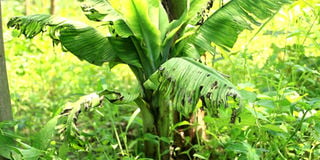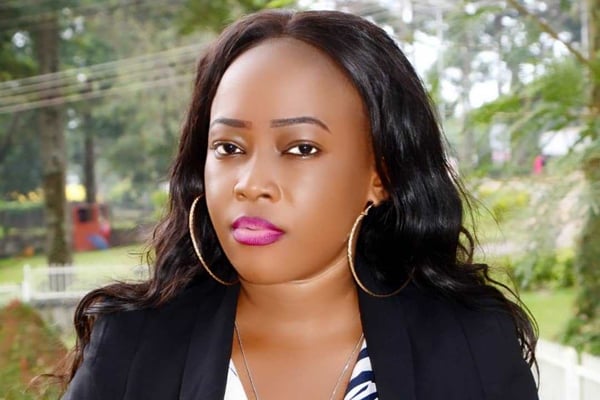New strange disease hits banana species

A new Banana Bunchy Top virus has attacked banana leaves in Kasese District. Photo | Joel Kaguta
The Ministry of Agriculture Animal Industry and Fisheries (MAAIF) has discovered a new disease that attacks banana plants thus reducing their production.
Banana bunchy top virus (BBTV) disease has been discovered in some districts of Uganda and neighbouring countries of Rwanda, Tanzania and Congo.
According to Mr Joab Tugume, a Senior Agricultural Inspector in charge of plant Quarantine and Import Regulation under the Department of Crop inspection and certification (MAAIF), the disease was confirmed in 2020 in districts of Arua, Kasese, Zombo; and are now undertaking a survey on its spread.
“We are on a delimiting survey to determine the extent to which the disease has spread. We characterized the regions and determined the high-risk areas like West Nile, Zombo, Adjumani, Arua, Nebbi, and midwestern areas like Bulisa, Hoima, and Masindi. These were considered to be high risk because their neighbours in Congo come with banana planting materials that are already infected. In the southern western districts of Rakai, Isingiro, Ntungamo, Kabale are equally at risk because they neighbour Rwanda and Tanzania. However, at the moment the disease is confirmed in Kasese, Zombo, and Arua,” he said.
Mr Tugume added that an infected plant presents severe stunting, narrow leaves, chlorotic leaf margins, and dark green streaks on petioles and midribs.
“The affected plant also shows a rosette-like or bunchy and choked appearance which makes the plant produce hardly any bunch," he said.
Mr Tugume further noted that the disease is spread by aphids and planting infected suckers.
“The disease has the capacity to wipe out banana gardens within 3 to 5 years unless farmers practice the control measures such as the proper destruction of affected stems, control of aphids, and clean planting materials,’’ he said.
Mr Hebert Musiimenta, the Principal Agricultural Inspector MAAIF advised farmers to first consult agriculture officers in their areas to pick planting materials in order to contain the spread of the disease.
“Farmers should stop getting banana planting materials from Nebbi, Zombo, Arua, Maracha, Kisoro, Kabale, Ntungamo, Isingiro and Koboko, Bunyangabu, Kasese, Kabarore, and Bundibugyo because these are considered to be high-risk districts."





